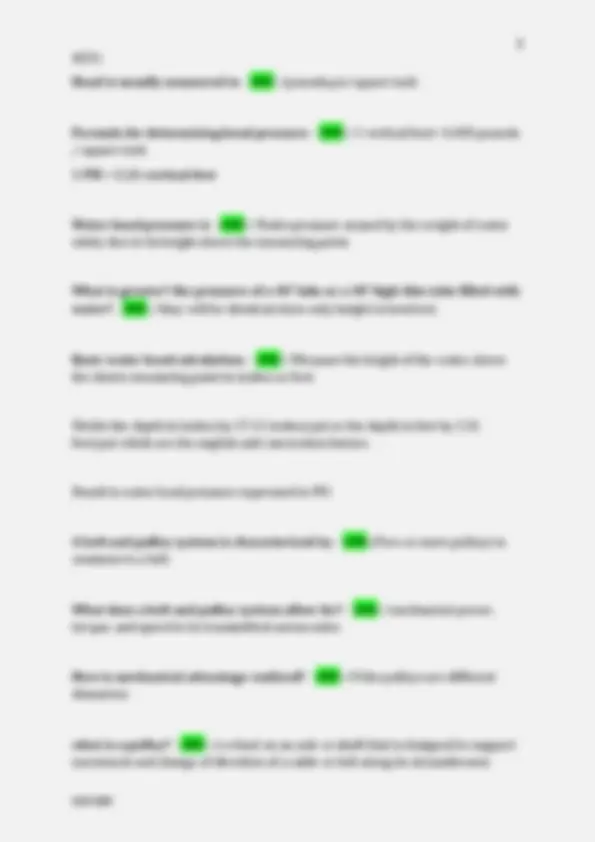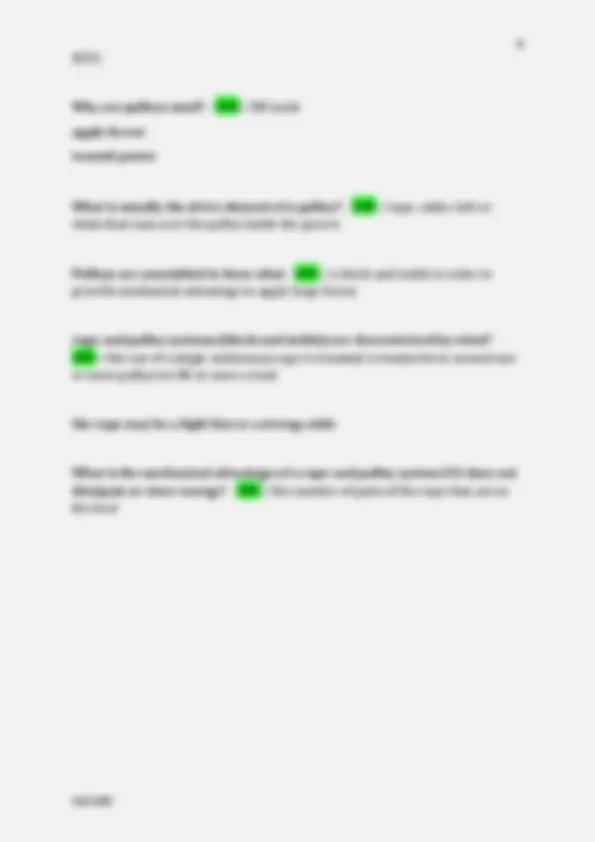




Study with the several resources on Docsity

Earn points by helping other students or get them with a premium plan


Prepare for your exams
Study with the several resources on Docsity

Earn points to download
Earn points by helping other students or get them with a premium plan
Community
Ask the community for help and clear up your study doubts
Discover the best universities in your country according to Docsity users
Free resources
Download our free guides on studying techniques, anxiety management strategies, and thesis advice from Docsity tutors
What is a lever? - ANS ✓a machine consisting of a beam or rigid rod pivoted at a fixed hinge or fulcrum How do levers work? - ANS ✓amplifies an input force to provide a greater output force, which is said to provide leverage what is the mechanical advantage of a lever? - ANS ✓the ratio or the output force to the input force How are levers classified? - ANS ✓by relative positions of the fulcrum and the input and output forces
Typology: Exams
1 / 4

This page cannot be seen from the preview
Don't miss anything!



What is a lever? - ANS ✓a machine consisting of a beam or rigid rod pivoted at a fixed hinge or fulcrum How do levers work? - ANS ✓amplifies an input force to provide a greater output force, which is said to provide leverage what is the mechanical advantage of a lever? - ANS ✓the ratio or the output force to the input force How are levers classified? - ANS ✓by relative positions of the fulcrum and the input and output forces. allows identification by the relative locations of the fulcrum, the resistance, and the effort. Class 1 Lever - ANS ✓Fulcrum in the middle the effort is applied on one side of the fulcrum and the resistance on the other side. Examples of Class 1 levers: - ANS ✓see saw, crowbar, scissors
What is the mechanical advantage of a Class 1 lever? - ANS ✓It may be greater than or less than 1 Class 2 Lever - ANS ✓Resistance in the middle. Effort is applied on one side of the resistance and the fulcrum is located on the other side. Examples of Class 2 levers: - ANS ✓Wheel barrow, a nutcracker, a bottle opener or the brake pedal of a car What is the mechanical advantage of a Class 2 lever? - ANS ✓It is always greater than 1 Class 3 Lever - ANS ✓Effort in the middle The resistance is on one side of the effort and the fulcrum is located on the other side. Examples of Class 3 levers - ANS ✓tweezers or the human mandible Mechanical advantage is always less than 1 FRE 123 - ANS ✓Fulcrum in middle for 1st class Resistance is in the middle for the 2nd lever Effort is in the middle for the 3rd HEAD - ANS ✓pressure created by the force of gravity and is a function of the difference in elevation between intake and output
Why are pulleys used? - ANS ✓lift loads apply forces trasmit power What is usually the drive element of a pulley? - ANS ✓rope, cable, belt or chain that runs over the pulley inside the groove Pulleys are assembled to form what - ANS ✓a block and tackle in order to provide mechanical advantage to apply large forces rope and pulley systems (block and tackle) are characterized by what? - ANS ✓the use of a single continuous rope to transmit a tension force around one or more pulleys to lift or move a load the rope may be a light line or a strong cable What is the mechanical advantage of a rope and pulley system if it does not dissipate or store energy? - ANS ✓the number of parts of the rope that act on the load